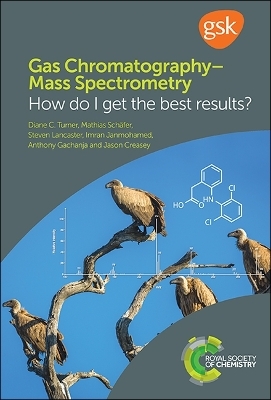
Gas Chromatography–Mass Spectrometry
How Do I Get the Best Results?
Seiten
2019
Royal Society of Chemistry (Verlag)
978-1-78262-928-3 (ISBN)
Royal Society of Chemistry (Verlag)
978-1-78262-928-3 (ISBN)
Gas chromatography–mass spectrometry (GC-MS) is a powerful way to analyse a range of substances. It is used in everything from food safety to medicine. It has even been used to protect endangered vultures through analysis of poisonous pesticide molecules in their environment!
I want to apply this technique, where do I begin? Is GC-MS is the right technique to use? How do I prepare my samples and calibrate the instruments? This textbook has the answers to all these questions and more.
Throughout the book, case studies illustrate the practical process, the techniques used and any common challenges. Newcomers can easily search for answers to their question and find clear advice with coloured images on how to get started and all subsequent steps involved in using GC-MS as part of a research process. Readers will find information on collecting and preparing samples, designing and validating methods, analysing results, and troubleshooting. Examples of pollutant, food, oil and fragrance analysis bring the theory to life.
The authors use their extensive experience teaching GC-MS theory and practice and draw on their combined backgrounds applying the technique in academic and industry settings to bring this practical reference together. The authors also design and teach the Royal Society of Chemistry’s Pan Africa Chemistry Network GC-MS course, which is supported by GSK.
I want to apply this technique, where do I begin? Is GC-MS is the right technique to use? How do I prepare my samples and calibrate the instruments? This textbook has the answers to all these questions and more.
Throughout the book, case studies illustrate the practical process, the techniques used and any common challenges. Newcomers can easily search for answers to their question and find clear advice with coloured images on how to get started and all subsequent steps involved in using GC-MS as part of a research process. Readers will find information on collecting and preparing samples, designing and validating methods, analysing results, and troubleshooting. Examples of pollutant, food, oil and fragrance analysis bring the theory to life.
The authors use their extensive experience teaching GC-MS theory and practice and draw on their combined backgrounds applying the technique in academic and industry settings to bring this practical reference together. The authors also design and teach the Royal Society of Chemistry’s Pan Africa Chemistry Network GC-MS course, which is supported by GSK.
Sample Collection and Preparation: How Do I Get My Sample Ready for GC-MS Analysis?;
How Do I Introduce My Samples into the GC Column?;
Chromatographic Separation;
How Do I Detect My Analytes?;
Mass Analysis;
What Is Qualitative Analysis and How Do I Perform It?;
Basic Aspects of Mass Spectra Interpretation;
What Is Quantitative Analysis and How Do I Perform It?;
How Do I Maintain My GC-MS?;
How Do I Troubleshoot a Problem on My GC-MS?;
Conclusions
| Erscheinungsdatum | 04.12.2019 |
|---|---|
| Verlagsort | Cambridge |
| Sprache | englisch |
| Maße | 156 x 234 mm |
| Gewicht | 1055 g |
| Themenwelt | Naturwissenschaften ► Chemie ► Analytische Chemie |
| Naturwissenschaften ► Chemie ► Organische Chemie | |
| ISBN-10 | 1-78262-928-9 / 1782629289 |
| ISBN-13 | 978-1-78262-928-3 / 9781782629283 |
| Zustand | Neuware |
| Haben Sie eine Frage zum Produkt? |
Mehr entdecken
aus dem Bereich
aus dem Bereich


